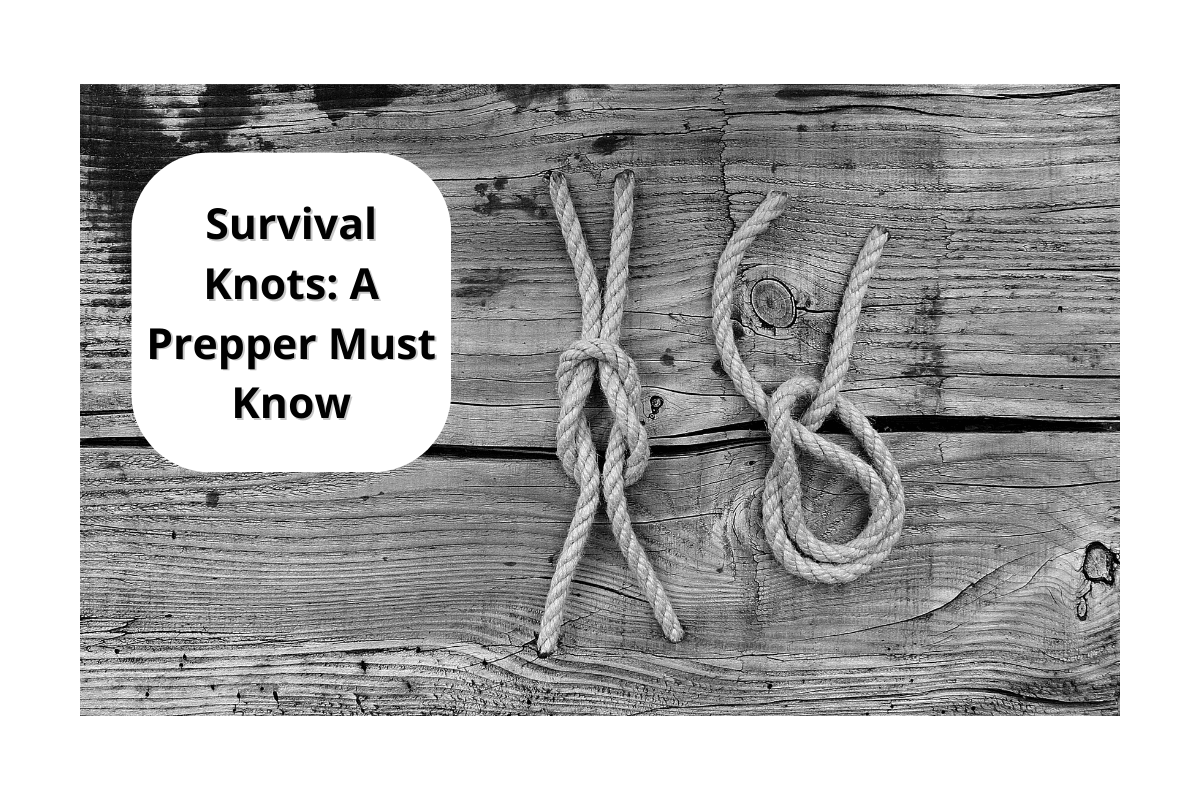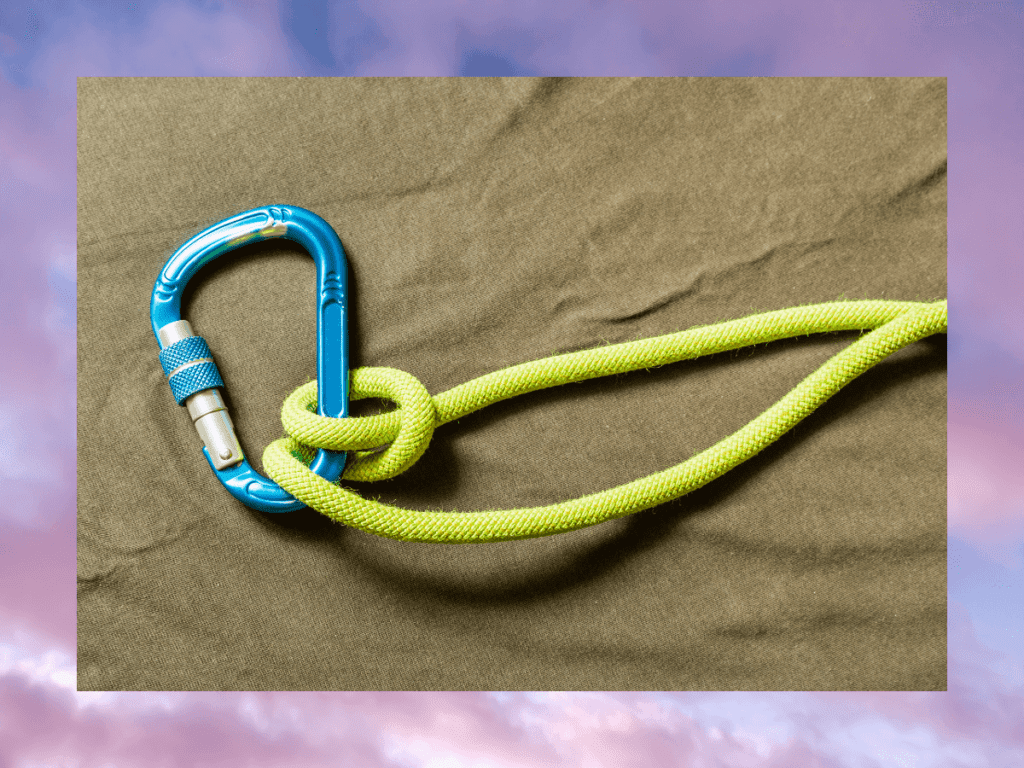As a prepper or outdoor enthusiast, the importance of mastering various knots cannot be overstated. Picture this scenario: you’re in the wilderness, facing an unexpected survival situation, and the security of your shelter or gear depends on the strength and reliability of two prepper knots. That’s where the true value of knot-tying skills shines through.
Prepper knots are not just about tying ropes together; they are versatile tools that can serve a multitude of purposes in emergency scenarios. From securing tarps for shelter to creating makeshift tools or traps, the practical applications of knots are boundless for those prepared for the unexpected.
In my upcoming post, I will delve into the world of prepper knots, exploring essential knot-tying techniques that every survivalist should have in their skill set. Join me as we unravel the art of knot mastery and discover how these fundamental skills can be the difference between chaos and control in the face of adversity.
Post Contents
ToggleEssential Prepper Knots: A Comprehensive Guide
When it comes to prepping, knowing how to tie essential knots can be a game-changer in various survival scenarios. Let’s dive into some of the most crucial prepper knots and understand their applications.
The Bowline Knot

The Bowline Knot is a fundamental knot that every prepper should master. Here’s how to tie it:
- Form a small loop near the end of the rope.
- Pass the working end through the loop.
- Continue around the standing end and back through the small loop.
This knot’s strength and reliability make it ideal for various prepping situations, such as creating a fixed loop to secure items or rescue operations. Check out this resource for visual instructions.
The Figure-Eight Knot

The Figure-Eight Knot is simple yet highly versatile, especially in climbing and rappelling scenarios. Follow these steps to tie it:
- Create a loop in the rope.
- Pass the tail over itself to form a loop.
- Continue under and around the standing end.
This knot’s ability to retain strength even after heavy loads and its ease of untying make it an essential skill for preppers. Learn more about tying the Figure-Eight Knot here.
The Clove Hitch

In emergency situations, the Clove Hitch can quickly secure lines to objects. Here’s how to tie it:
- Wrap the free end of the rope around an object.
- Cross it over itself and around the object again.
- Slip the working end under the last wrap.
This knot’s simplicity and adjustability make it valuable for fastening shelters, creating makeshift tools, or setting up temporary structures. Watch a tutorial on tying the Clove Hitch here.
The Monkey Fist Knot

For tasks like creating a weight for throwing lines or establishing anchor points, the Monkey Fist Knot is indispensable. Follow these steps:
- Take the rope and make three wraps around your fingers.
- While holding the wraps, make three more turns around them.
- Pass the end through the middle to complete the knot.
This knot’s density and weight make it ideal for throwing lines accurately or as a tool for self-defense. Dive deeper into tying the Monkey Fist Knot here.
The Trucker’s Hitch

When it comes to tightening and securing loads for transportation, the Trucker’s Hitch is a go-to knot. Here’s how to tie it:
- Tie one end of the rope to a fixed object.
- Make a wrap around another fixed point opposite the tie-in point.
This knot’s mechanical advantage allows for a strong grip on loads, making it essential for securing gear during travel or setting up tarp shelters. Learn how to tie the Trucker’s Hitch here.
Mastering these essential prepper knots equips you with the skills needed to handle various situations efficiently. Practice these knots to ensure you’re prepared for whatever challenges may come your way.
Advanced Knots for Seasoned Preppers
In the world of seasoned preppers, mastering advanced knots is essential for survival preparedness. These intricate knots serve crucial purposes in securing heavy loads, creating makeshift pulleys, and facilitating emergency rappelling and belaying techniques. Let’s delve into the intricacies of three advanced knots that every seasoned prepper should have in their repertoire.
The Constrictor Knot

The Constrictor Knot, known for its gripping power, is a go-to choice for securing heavy loads and making improvised anchors in survival scenarios. Follow these steps to tie a Constrictor Knot:
- Begin by forming a loop over the object you wish to secure.
- Wrap the working end around the standing part several times.
- Pass the working end through the loop and tighten the knot to ensure a firm grip.
- To release, simply loosen the knot by pulling the free end.
This knot’s effectiveness in preventing slippage and maintaining tension makes it invaluable for preppers facing unpredictable situations. Here is a link to learn more about survival knots.
The Highwayman’s Hitch

The Highwayman’s Hitch is a quick-release draw hitch beloved by preppers for its versatility in securing loads and creating makeshift pulleys. To tie the Highwayman’s Hitch:
- Double back the working end to create a loop.
- Wrap the end around the standing part and pass it through the loop.
- Pull the end to tighten the knot securely.
- To release the hitch, a quick pull of the working end disengages the knot effortlessly.
This adjustable knot’s ability to offer a swift release when needed and its simple yet effective design make it a must-know for seasoned preppers. Check out this link to explore more about the Highwayman’s Hitch.
The Munter Hitch

A staple in emergency rappelling and belaying, the Munter Hitch is a versatile knot that every seasoned prepper should master. To tie a Munter Hitch:
- Form a loop with the rope and twist it to create two parallel lines.
- With the belay hand, thread the rope through the carabiner.
- Maintain control on both ends while ensuring proper tension for safe rappelling or belaying.
- To release, simply untwist the hitch to free the rope smoothly.
The Munter Hitch’s efficiency in rappelling situations and its belaying capabilities without a device underline its importance for preppers navigating challenging terrains. For further insights, visit this link on the Munter Hitch.
Knot Safety and Best Practices
Maintaining the safety of knots is crucial for any prepper, ensuring the reliability and strength of your knots can make a significant difference in emergency situations. Here are some key practices to keep in mind:
Inspecting and Maintaining Your Knots
Regularly inspecting your knots is essential to identify any wear and tear. Check for fraying, cuts, or abrasions on the rope that could weaken the knot. Proper storage in a dry, cool place away from direct sunlight can also help prolong the lifespan of your ropes. Remember to coil your ropes neatly to prevent kinks and tangles, which can weaken the fibres over time.
Knot Strength and Load Capacity
Understanding the strength of your knots and their load limits is crucial for safety. Different knots have varying strengths, and it’s important to know the maximum load each knot can bear. Always consider safety factors and margins of error when determining the suitable knot for a particular task. Be cautious not to overload the rope beyond its capacity, as this can lead to failure during critical situations.
Situational Awareness and Knot Selection
Adapting to changing environments and conditions requires a good grasp of situational awareness. Choose the right knot for the job based on the specific needs of the situation. Consider factors like the type of load, the direction of force, and environmental elements like moisture or heat. Being able to select and tie the appropriate knot swiftly and accurately can make a significant difference in the outcome of your prepping endeavours.
By following these safety practices and guidelines, you can enhance the reliability of your knots and ropes, ensuring your preparedness in any situation. Remember, practice makes perfect, so rehearse your knot tying skills regularly to maintain proficiency and readiness.
For more in-depth information on rope safety and knot practices, check out Rope Safety Info and 10 Essential Knots for Rope Access.
FAQs
Have you ever wondered about the strongest knot for prepping or whether knots can be untied after heavy tension? Let’s dive into some frequently asked questions about prepper knots to help you become more proficient in this essential skill.
What is the Strongest Knot for Prepping?
When it comes to prepping, one of the strongest and most reliable knots to master is the Bowline knot. Known for its security and ease of untying after being subjected to a heavy load, the Bowline is a go-to choice for many preppers due to its versatility in various situations.
Can Knots be Untied After Heavy Tension?
Yes, with the right technique and practice, knots can be untied even after being subjected to heavy tension. Understanding the principles of knot tying and learning proper untying methods are essential skills for preppers to ensure adaptability and efficiency in challenging scenarios.
What are Effective Practice Techniques for Prepper Knots?
Practice makes perfect when it comes to mastering prepper knots. Utilize paracord or other suitable ropes to practice tying knots repeatedly until you can do it effortlessly. Watching tutorials, joining forums, and seeking guidance from experienced preppers can also enhance your knot-tying skills.
What are Versatile Prepper Knots Every Survivalist Should
Know?
Apart from the Bowline knot, Double Sheet Bend and Halter Hitch are two versatile knots that every survivalist should have in their skill set. These knots are useful for various tasks such as securing shelters, creating makeshift tools, and crafting survival equipment.
How to Tie Emergency Shelter Knots for Survival Situations?
In emergency situations where shelter needs to be quickly erected, knowing litter lashing techniques and basic anchors can be lifesaving. Preppers should familiarize themselves with essential knots for shelter-building to ensure safety and protection in challenging environments.
By understanding and practicing these fundamental prepper knots, you can enhance your preparedness and survival skills for any unforeseen circumstances that may arise. Start honing your knot-tying abilities today to be better equipped for whatever challenges come your way.
Conclusion
Mastering the art of knot tying is a crucial skill for any prepper. It’s not just about knowing how to tie knots, but understanding their importance in survival situations. Practice makes perfect, so don’t hesitate to hone your skills regularly. The lifesaving potential of prepper knots cannot be overstated – they can be the difference between safety and danger in times of crisis. So, keep practicing, keep learning, and stay prepared for whatever may come your way.









